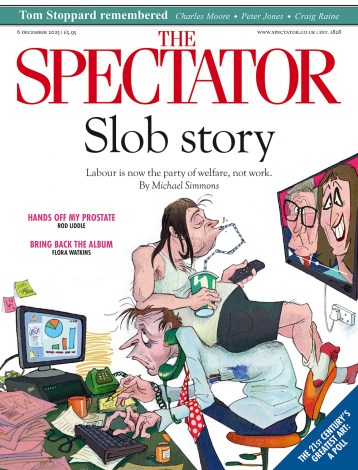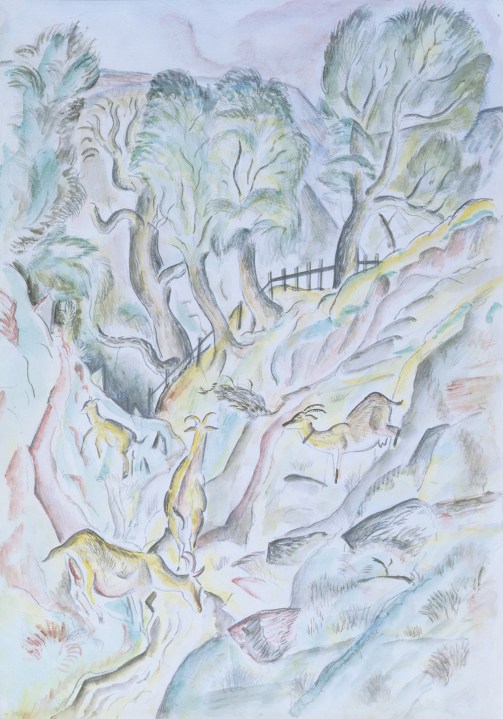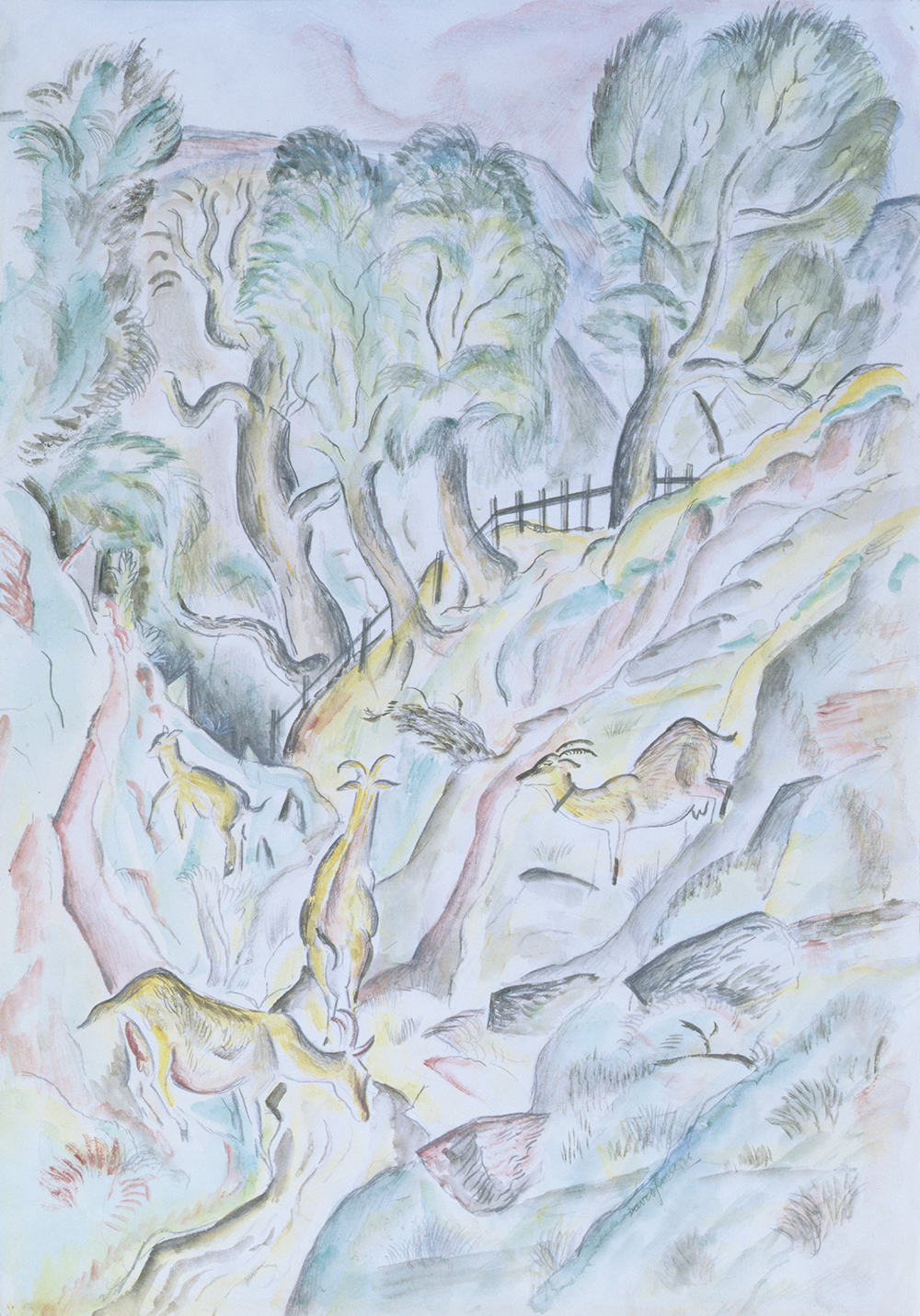
A few weeks ago I went along to a lecture on the Welsh artist, poet and soldier David Jones. Kenneth Clark considered him ‘the most gifted of all the young British painters’. The talk, by a recent art-history graduate with a first-class degree from a reputable university, began at a cracking pace. It was only when he started to show slides to illustrate his talk that I began to feel very hot and sweaty. The paintings were not by Jones but his near-contemporary Stanley Spencer.
Jones did share with Spencer the experience of serving with the British Army during the first world war. And both were stimulated by this immersion into an unexpected, unwanted world. But there is no chance that their work could be mistaken for that of each other.
The gaffe was comic but also instructive: it revealed a weakness that stretches beyond one lecture, and demonstrates a wider shift in how art history is taught in British universities. Too often today, the practical skill of looking has been displaced by theory. This matters because identifying such things as style and technique isn’t elitist nitpicking: it is the bedrock of art history. The way of understanding our rich past lies in questions of attribution, conservation and connoisseurship. Yet a well-known art historian recently told me that authorship and originality are not important – and she’s at the Courtauld.
The traditional teaching of art history in Britain for many years mixed a cogent way of explaining the broad sweep of art history in books such as Ernst Gombrich’s The Story of Art, with scholarly texts by the likes of Erwin Panofsky and Giorgio Vasari. The classroom was supplemented with regular visits to galleries, auction rooms and private collections; these were lessons in subtlety. In this way, names, stories and styles were absorbed and students learned how to tell the difference between natural pigments and artificial colours – and if restoring a work, never to wet a brush with your mouth when using orpiment (a form of arsenic sulphide).
To a new generation of academics in the 1970s and 1980s, however, these practices were the preserve of posh duffers. What mattered to them was not the painting on the wall, but the sociological foreplay. Chris Fiddes, one of Britain’s leading figurative artists who has taught art history for 30 years, remembers the change: ‘I knew things weren’t looking good when I went on a course and the first lecture was titled “Peter Bruegel the Elder was a Marxist”, a theory which had come about because of his depiction of peasant life and criticisms of greed in his paintings.’
Bruegel the Elder is far from the only artist to have suffered in this way. Anxious wall texts apologising for the supposed shortcomings of the artists on display and encouraging visitors to see prejudices that do not exist are now the norm.
Too often today, the practical skill of looking has been displaced by theory
This is not to say contemporary approaches are entirely without merit in the opinion of the art historian and lecturer Tom Freeborn. ‘Understanding social history, gender, politics and cultural context does enrich our interpretation of art but we have to combine these subjects with the foundational basics of art history. I regularly come across senior lecturers who believe it doesn’t really matter who painted a picture or who carved a sculpture as long as it has meaning. Art history in some universities has become so conceptual that some students are leaving without the skills for a career they went to university to qualify for.’
This loss is most felt in museums. Curators are not only there to display objects but to authenticate and attribute and above all to explain them. Why is a piece of work made the way it is? Without the ability to recognise styles, methods, influences, you cannot answer that question. Bendor Grosvenor, art historian and author of The Invention of British Art, teaches connoisseurship at the Royal Academy in London, now one of the very few institutions in the UK where it is studied.
‘Learning about connoisseurship teaches you how to really look at an artwork. This might sound trite, but only close looking lets you judge how an object was made, by whom and when. Only once you’ve answered these questions can you begin the (much more popular) “why” of art history. If students are not taught it, even briefly, they are missing out on one of the essential tools of art history.
‘This doesn’t matter so much in academic art history, but it does in the museum world. Museums still need to resolve questions of attribution, but increasingly now curators don’t have these skills. It’s sad to see, and leads to a kind of stasis, because new discoveries cannot be made as frequently as they should be. This is especially the case with paintings originally made by women artists, but which have lost their attribution over the centuries, and were assumed to be by men.’
Disciples of tech, however, say, why bother with the human eye when software can be trained to spot differences of approach? But this is art history on autopilot, implying a complete faith in software. ‘From what I have seen so far, AI is not very good at connoisseurship,’ says Grosvenor. ‘This is not only because of the limitations of the technology, but because judging attribution is about so much more than just looking at a surface image; you have to also understand a painting’s condition, how it was made, and so on. I dread a future where we just rely on AI to tell us who painted what, because it will remove that critical act of art history: looking.’
Today very few art-history graduates leave university knowing these basics. Which has consequences. Each week I scan through thousands of artworks at auction, and each time I see a large number of mistakes. This lack of knowledge is wonderful for buyers like me but not so much for vendors who put their trust in people who they believe know what they are talking about. This also goes for art in public collections, where thousands of paintings and drawings are misattributed or marked as unknown, and will continue to be unless someone versed in the old standards of connoisseurship spots a mistake.
The remedy to all this is simple in principle and much more demanding in practice: teach students to read both art and context. Practical training, handling sessions, technical and scientific study of materials should sit alongside critical methods that illuminate art’s political and social context. Otherwise many more lecturers will end up mistaking the great artists, or worse, not even know why any of their work matters.








Comments